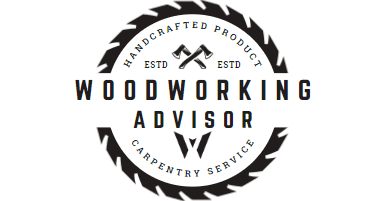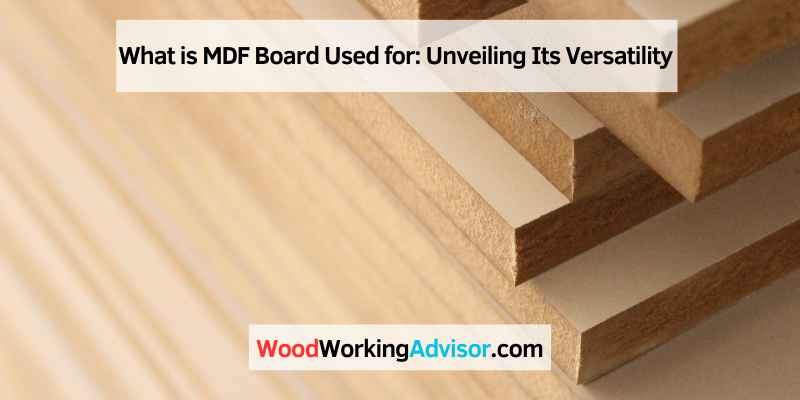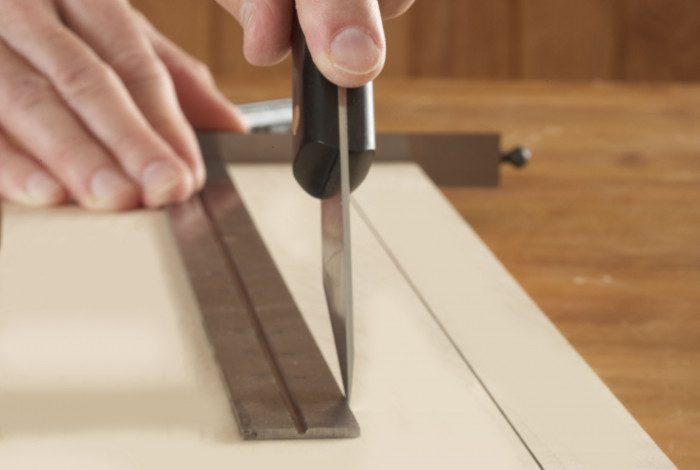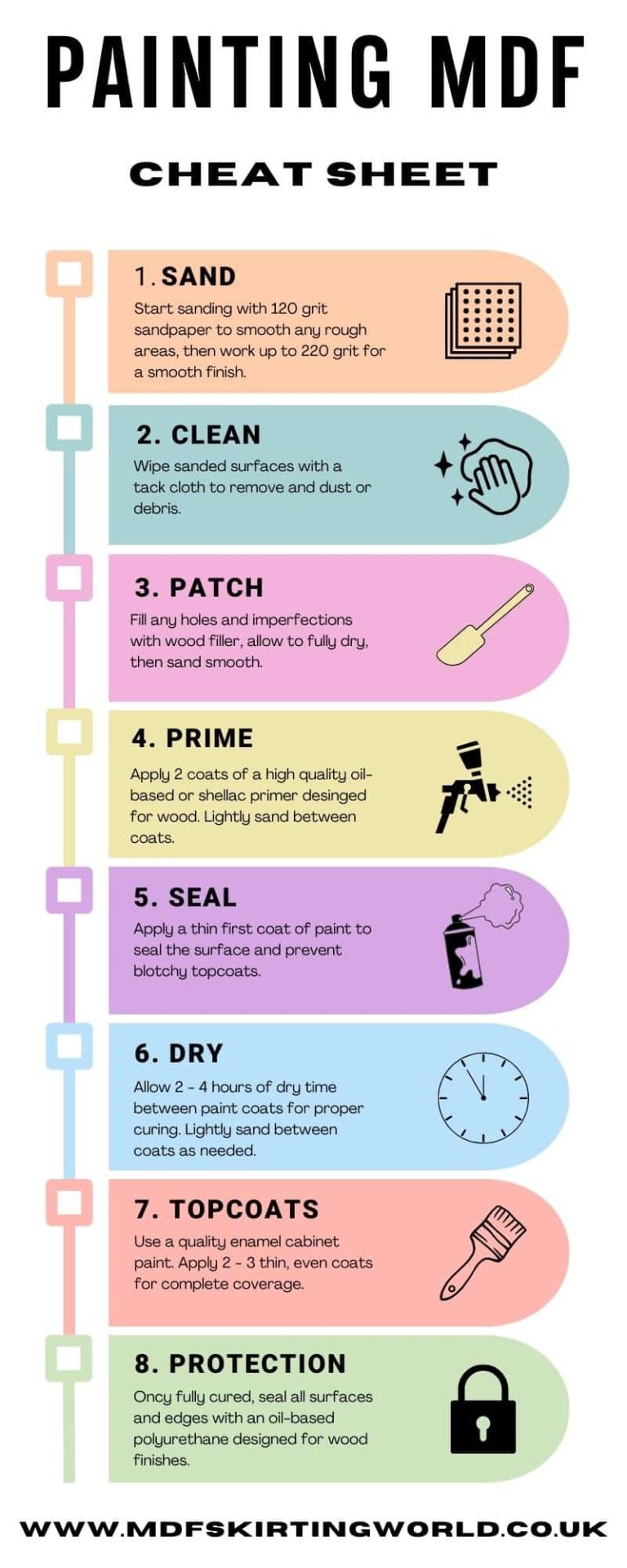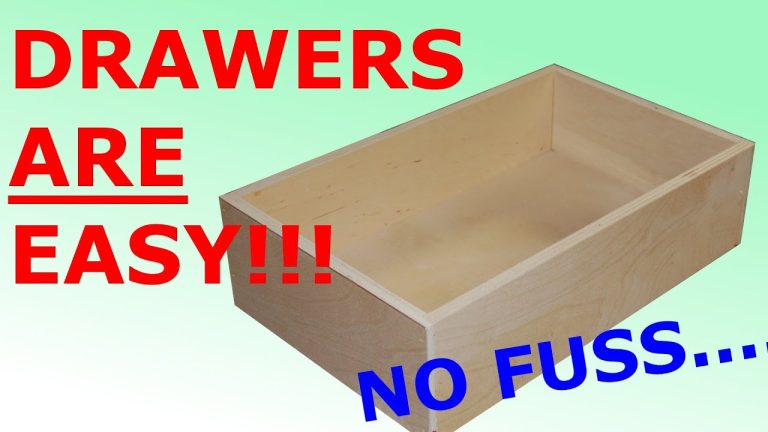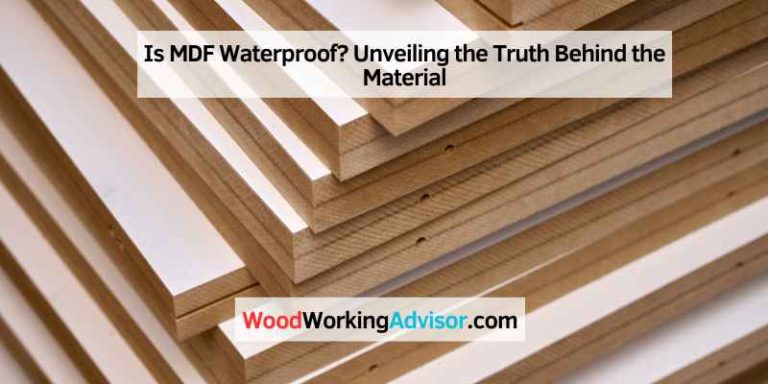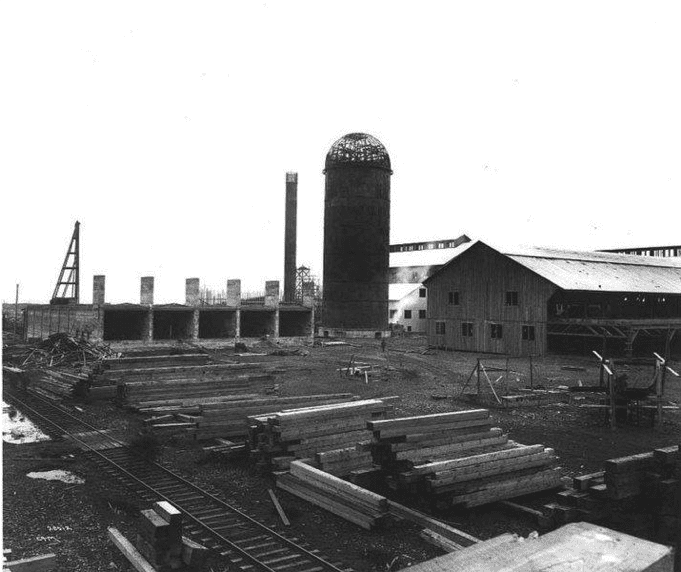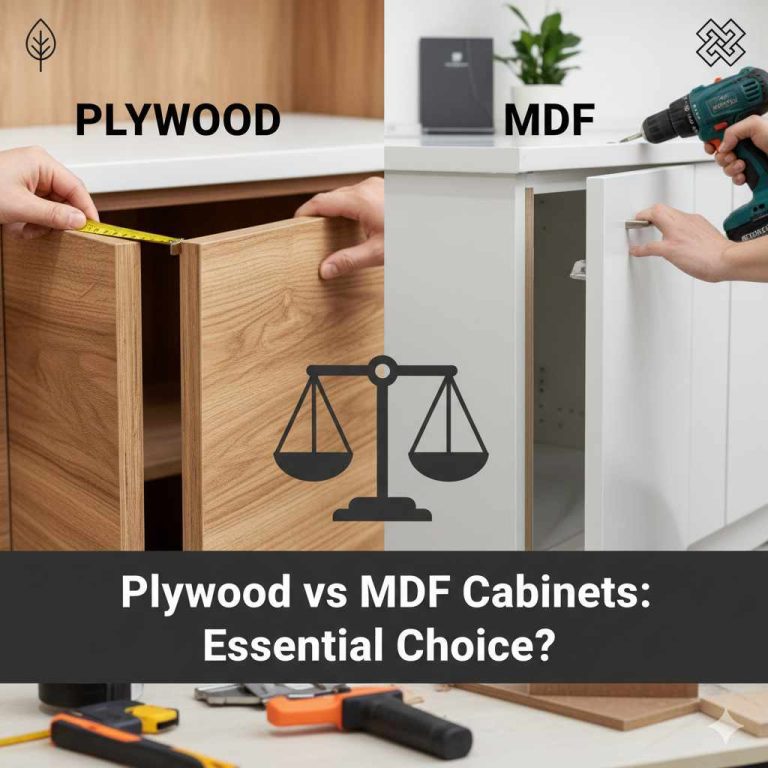What is MDF Board Used for: Unveiling Its Versatility
MDF board is used for making furniture, cabinets, shelving, and decorative molding. It is a versatile and cost-effective engineered wood product that offers a smooth, uniform surface for painting and finishing.
MDF board, or medium-density fiberboard, is a popular material in the construction and furniture industries. It is made by breaking down hardwood or softwood residuals into wood fibers, combining them with wax and a resin binder, and forming panels by applying high temperature and pressure.
The resulting MDF boards are dense, strong, and uniform, making them ideal for a wide range of applications. Whether used for crafting intricate designs or creating functional pieces, MDF board provides a stable and reliable material for various woodworking projects. Its affordability and consistent quality have made it a favored choice for both professional carpenters and DIY enthusiasts.
Introduction To MDF Board
MDF board is a versatile material widely used in construction and furniture making. It is commonly used for making cabinets, shelves, and other furniture pieces due to its durability and affordability. Its smooth surface also makes it ideal for painting and laminating.
The Basics Of MDF
MDF, or Medium Density Fiberboard, is a versatile and cost-effective engineered wood product made from wood fibers, resin, and wax. It is created by breaking down hardwood or softwood residuals into wood fibers, often in a defibrator, combining it with wax and a resin binder, and forming panels by applying high temperature and pressure.
MDF is renowned for its uniform density and smooth surface, making it an ideal material for a wide range of applications in the construction, furniture, cabinetry, and interior design industries.
Comparing MDF With Other Materials
MDF is often compared with other wood-based materials such as plywood and particle board. Unlike plywood, MDF lacks the grain of natural wood, which makes it an excellent choice for projects requiring a smooth, consistent finish. In comparison to particle board, MDF is denser and stronger, providing better support for screws and fasteners.
It’s important to understand the differences between these materials to determine which is best suited for specific projects and applications.
The Manufacturing Process
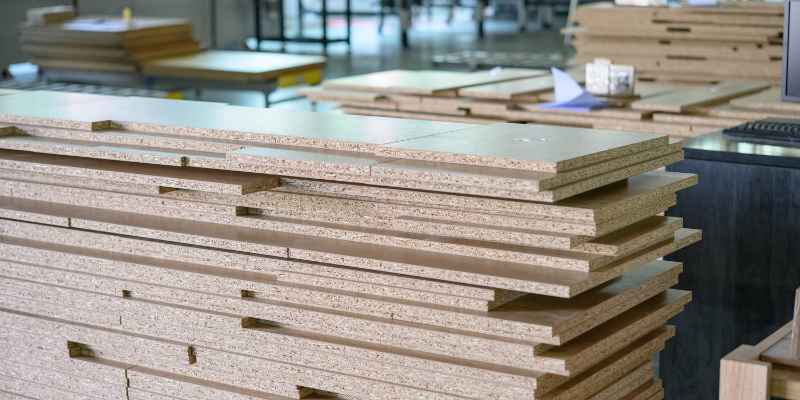
MDF board is made from wood fibers and resin, and is used in manufacturing for a variety of applications such as furniture, cabinetry, and molding. The manufacturing process involves combining the wood fibers and resin, pressing them into a board, and then finishing with sanding and coating.
MDF board is a popular choice for interior design and woodworking projects. It is a versatile material that can be used in a variety of applications, including furniture, cabinetry, and flooring. MDF stands for Medium Density Fiberboard, which is made by combining wood fibers and resin under high pressure and temperature. In this article, we will discuss the manufacturing process of MDF board, including its key ingredients and steps in production.
Key Ingredients
The key ingredients used in the production of MDF board are wood fibers, resin, and wax. The wood fibers are obtained from different types of wood, including softwood and hardwood. The fibers are then mixed with resin, which acts as a binding agent. The resin used in MDF board production is usually urea-formaldehyde or phenol-formaldehyde resin. Wax is also added to the mixture to enhance water resistance and durability.
Steps In Production
The production of MDF board involves several steps. First, the wood fibers are dried and screened to remove any impurities. Next, the fibers are mixed with resin and wax in a blender. The mixture is then poured onto a conveyor belt, which carries it through a series of rollers. The rollers compress the mixture under high pressure and temperature, which activates the resin and forms the board. After the board is formed, it is cooled and sanded to achieve a smooth surface. The final step is to cut the board into the desired size and shape.
In conclusion, MDF board is a popular material used in a variety of applications due to its versatility and affordability. Its manufacturing process involves the combination of wood fibers, resin, and wax under high pressure and temperature. By understanding the key ingredients and steps in production, you can better appreciate the benefits and limitations of MDF board in your woodworking projects.
Advantages Of Using MDF
MDF boards are versatile and commonly used in furniture making due to their smooth finish and cost-effectiveness. They offer excellent stability and are easy to paint and customize for various interior design projects.
Cost-effectiveness
MDF boards are cost-effective for various projects. They are affordable.
Versatility
MDF is versatile and can be used for different applications.
Ease Of Use
MDF is easy to work with, making it ideal for DIY projects.
MDF is affordable and can be used in many projects. It is versatile, suitable for different applications. Ease of use makes it ideal for DIY projects.
Common Uses In Furniture
MDF board is commonly used in furniture making, offering a smooth surface for painting and laminating. It is popular for crafting cabinets, shelves, and wardrobes due to its durability and affordability. This versatile material is also utilized for creating intricate designs and decorative elements in furniture pieces.
Cabinetry
MDF board is commonly used in creating cabinet doors and frames.
Its smooth surface allows for easy painting and finishing.
Desks And Tables
MDF board is ideal for crafting sturdy desks and tables.
Its durability makes it suitable for daily use.
Shelving Units
MDF board is frequently employed in constructing shelving units.
Its versatility allows for customization to fit various spaces.
MDF In Construction
MDF board is a versatile material used in construction for its affordability and durability. It is commonly used for interior projects such as cabinetry, shelving, and molding. Its smooth surface allows for easy painting and finishing.
Flooring Underlay
MDF board is commonly used as a flooring underlay due to its smooth and flat surface. It provides a stable base for flooring materials such as laminate, hardwood, and carpet. MDF underlayment is also an affordable option as compared to other materials. It is easy to install and provides excellent insulation and soundproofing.
Door Frames
MDF board is an ideal material for door frames due to its durability and resistance to warping. It can be easily cut, shaped, and painted to match any decor. MDF door frames are also an affordable alternative to solid wood frames. They provide a sturdy and long-lasting support for doors.
Molding And Trim
MDF board is widely used in construction for molding and trim work. It is easy to work with and can be cut into intricate designs. MDF molding and trim is also cost-effective as compared to traditional wood or plaster options. It can be painted to match any decor and provides a smooth and consistent finish.
In conclusion, MDF board is a versatile material that is widely used in construction. It is affordable, easy to work with, and provides a smooth and consistent finish. Whether you are looking to install flooring, door frames, or molding and trim, MDF board is an excellent choice.
Creative Applications
MDF (Medium-Density Fiberboard) is a versatile material widely used in various creative applications. Its smooth surface and uniform composition make it an ideal choice for DIY projects, art and decor, and custom storage solutions.
DIY Projects
MDF board is a go-to material for DIY enthusiasts due to its affordability and ease of use. Whether you’re building a bookshelf, a coffee table, or a wall-mounted organizer, MDF provides a stable base that can be easily cut, shaped, and painted. Its smooth surface allows for seamless finishes, making your DIY creations look professional and polished.
Art And Decor
The versatility of MDF board extends to the world of art and decor. Its smooth and flat surface is perfect for painting, allowing artists to create stunning masterpieces. MDF can also be used as a canvas for mixed media art, providing a sturdy foundation for various materials such as acrylics, collage, and more. Additionally, MDF can be easily carved or engraved, making it ideal for creating intricate wall decorations and personalized signs.
Custom Storage Solutions
MDF board is a popular choice for custom storage solutions due to its strength and durability. It can be used to build custom cabinets, shelves, and wardrobes that perfectly fit your space and organizational needs. MDF’s smooth surface is also suitable for attaching hardware such as drawer slides and hinges, ensuring seamless functionality. Whether you’re looking to maximize storage in your kitchen, bedroom, or garage, MDF offers endless possibilities for customized storage solutions.

Environmental Considerations
MDF board is a versatile material used in various applications, but it’s important to consider its environmental impact. Understanding the sustainability aspects, recycling, and disposal of MDF board is crucial to make informed decisions about its usage.
Sustainability Aspects
MDF board is made from wood fibers and resin, which are sourced from fast-growing trees such as pine and poplar. This sustainable sourcing helps in reducing the pressure on natural forests and promotes responsible forestry practices.
Recycling And Disposal
When MDF board reaches the end of its life cycle, it can be recycled to create new products or used as fuel for energy generation. However, due to the resin content, recycling MDF can be challenging and requires specialized processes. Proper disposal methods are essential to prevent environmental harm.
Tips For Working With MDF
MDF, or Medium Density Fiberboard, is a versatile material commonly used in the construction and furniture industries. It is known for its smooth surface and uniform density, making it an ideal choice for a wide range of projects. Working with MDF requires attention to detail and proper techniques to achieve the best results. Here are some essential tips for working with MDF to help you handle this material effectively and efficiently.
Cutting And Shaping
When cutting MDF, it is essential to use sharp blades to achieve clean edges. Sharp blades reduce the risk of chipping and splintering, resulting in a smoother finish. Additionally, using a fine-toothed saw blade helps minimize tear-out during cutting and shaping, ensuring precise and clean cuts.
Finishing And Painting
Before finishing or painting MDF, it is crucial to seal the edges and surfaces with a quality sealer or primer. This step helps prevent the material from absorbing excess moisture and ensures a uniform finish. When painting MDF, apply thin, even coats to avoid creating a thick layer that could lead to cracking or peeling over time.
Preventing Damage
To prevent damage to MDF, it is important to handle the material with care, especially during transportation and installation. Avoid exposing MDF to excessive moisture, as it can cause swelling and warping. Additionally, using proper supports and fasteners when securing MDF in place helps maintain its structural integrity and longevity.
Frequently Asked Questions
What Is MDF Board Used For?
MDF board, or Medium Density Fiberboard, is a versatile material with various applications. It is commonly used for furniture, cabinetry, and interior design projects. Its smooth surface makes it ideal for painting, and it can be easily cut, shaped, and routed.
MDF is also used in construction for wall paneling and molding, as well as in the manufacturing of doors and flooring. Its stability and affordability make it a popular choice in the woodworking industry.
Is MDF Board Safe To Use?
Yes, MDF board is safe to use when handled properly. However, it is important to take precautions when cutting or sanding MDF, as it can release fine dust particles that may cause respiratory irritation. It is recommended to wear a mask and work in a well-ventilated area.
Additionally, MDF contains formaldehyde, a chemical that can emit low levels of gas over time. To minimize this, choose low-formaldehyde or no-added formaldehyde (NAF) MDF products, which have lower emissions.
How Does MDF Board Compare To Solid Wood?
MDF board differs from solid wood in several ways. While solid wood is made from natural timber, MDF is composed of wood fibers and resin, bound together under high pressure and heat. MDF has a smoother surface and is more uniform in density and thickness compared to solid wood.
It is also less prone to warping, splitting, or shrinking. However, solid wood offers a natural and authentic aesthetic, and can be more durable and resistant to moisture compared to MDF.
Can MDF Board Be Used In Wet Areas?
MDF board is not recommended for use in wet areas or high-humidity environments, as it is prone to swelling and damage when exposed to moisture. Its composition of wood fibers makes it susceptible to water absorption, which can lead to warping or disintegration.
For wet areas such as bathrooms or kitchens, it is advisable to use materials specifically designed for moisture resistance, such as marine plywood or waterproof laminated boards.
Conclusion
MDF boards are versatile materials used in furniture, cabinetry, and construction projects. Their affordability and durability make them a popular choice for many applications. Understanding their uses and benefits can help you make informed decisions for your next project. Explore the possibilities with MDF boards!
